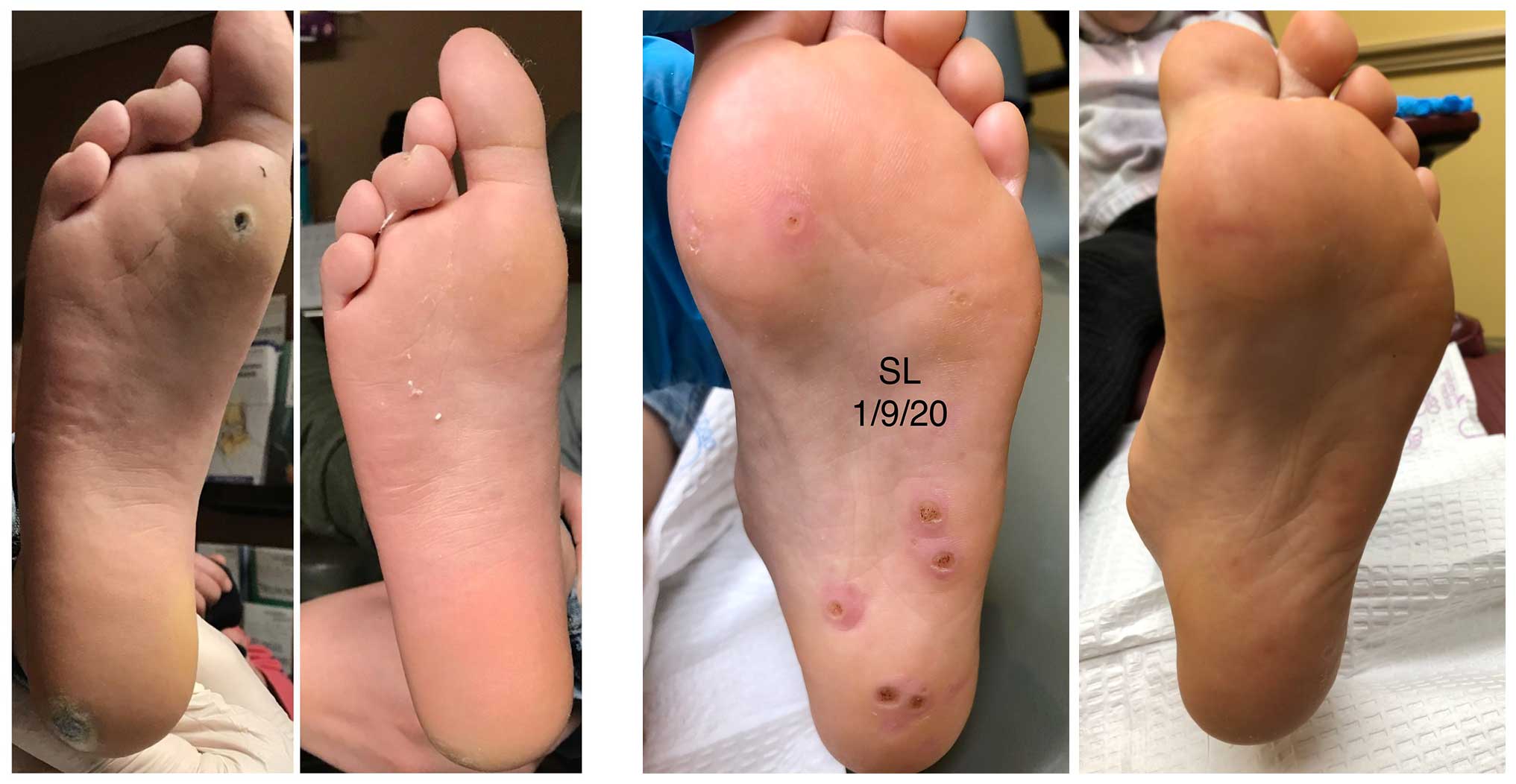Understanding Plantar Wart Root Causes and Treatments
Are you struggling with plantar warts? If so, you’re not alone—plantar warts are one of the most common causes of foot pain. The good news is that an understanding of its root cause and proper treatments can make suffering from this condition a thing of the past. In this blog post, we’ll delve into what exactly a plantar wart is, why it develops, and some effective methods to reduce your chances of developing them or treating existing ones. Join us as we explore all things related to plantar wart root!

Plantar Wart Root
What is a Plantar Wart and What Causes Them
A plantar wart may appear as a small, rough, and painful growth on the sole of your foot. This type of wart is caused by the human papillomavirus (HPV) and is usually contracted by walking barefoot on contaminated surfaces, such as swimming pool decks, locker rooms, or public showers. What makes plantar warts particularly challenging to treat is that they can grow deep into the skin, making them resistant to topical over-the-counter treatments. Additionally, they can spread to other areas of the foot or to other people, so it’s important to seek professional medical attention if you suspect you have a plantar wart.
Common Symptoms of Plantar Warts
If you’ve ever experienced plantar warts, you know how painful and uncomfortable they can be. Plantar warts are a type of wart that develops on the sole of your foot, and they’re caused by the human papillomavirus (HPV). Some of the most common symptoms of plantar warts include a thickened, rough area of skin on the bottom of your foot, tiny black dots that resemble seeds, and potentially tender or painful sores. While plantar warts can often clear up on their own, it’s important to take preventative measures to avoid spreading the virus or making the situation worse. Seeking medical treatment can help you get the relief you need and get back on your feet again.
Diagnosing Plantar Warts
Diagnosing plantar warts may prove to be a daunting task for patients and medical professionals alike. These types of warts are often confused with corns or calluses due to their similar appearance. However, there are key differences to look out for during diagnosis. Plantar warts may have small black dots or blood vessels within them. They can also cause discomfort or pain when walking or standing. In some cases, they may even multiply or spread to other parts of the foot. It is important to seek medical advice if a plantar wart is suspected, as early detection and treatment can prevent further complications.
Different Types of Treatment for Plantar Warts
Plantar warts are a common issue that affects many individuals, and fortunately, there are several types of plantar wart treatment available. Cryotherapy involves freezing the wart off with liquid nitrogen, while laser therapy vaporizes the affected area with a high-intensity beam of light. Another option is to use topical medications, like salicylic acid, to slowly dissolve the wart. Additionally, surgical removal of the wart may be necessary in some cases. It’s important to consult with a healthcare professional to determine the best course of action for treating a plantar wart.
How to Prevent Future Outbreaks of Plantar Warts
Plantar warts are a common problem that affects many individuals, and while they are not typically a serious health concern, they can be uncomfortable and unsightly. To prevent future outbreaks of plantar warts, it is important to take some preventative measures. First, ensure good foot hygiene by washing the feet regularly and keeping them dry to prevent the growth of bacteria and fungi. Secondly, avoid walking barefoot in public areas such as swimming pools and communal showers to reduce the risk of exposure to the virus that causes plantar warts. Lastly, maintain a strong immune system through a healthy diet, regular exercise, and sufficient sleep to improve your body’s ability to fight off infections. By following these simple steps, you can help prevent future outbreaks of plantar warts and keep your feet happy and healthy.
Questions to Ask Your Healthcare Provider About Plantar Warts
If you’ve noticed a small, rough growth on the bottom of your foot, it’s possible that you’ve developed a plantar wart. Although these types of warts are typically harmless, they can be painful and annoying. That’s why it’s important to consult with your healthcare provider about treatment options. But before you do, it’s essential to come prepared with a list of questions to ensure that you fully understand the condition and the various treatment options available. Some important questions to ask include how the wart can be identified, what are the best treatment options, and whether the condition can be prevented from occurring again in the future. By being proactive and informed, you can effectively address this common foot problem and get back on your feet pain-free.

Plantar Wart Root Treatment
Flagstaff Foot Doctors: Anthony Rosales DPM
https://www.google.com/maps?cid=8835841318590452161
421 N Humphreys St, Flagstaff, AZ 86001, United States
(928) 774-4825
https://flagstafffootandankle.com/
